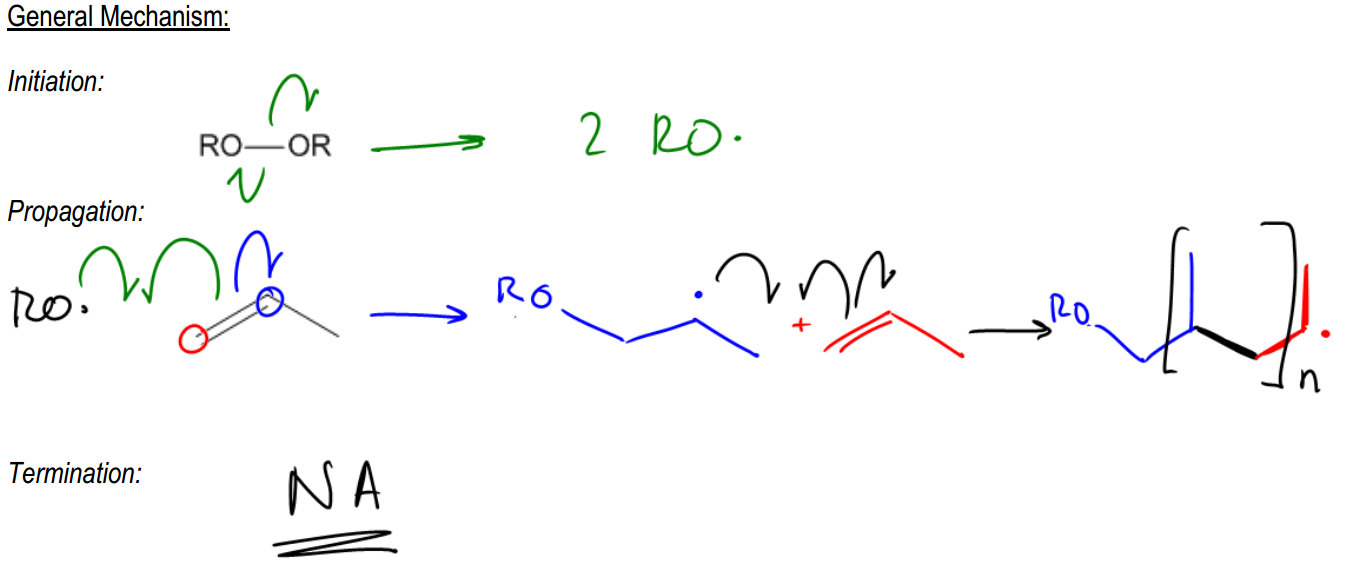When radicals are exposed to alkanes in excess, they can do something really weird. And what that is is they can do something called polymerization. Polymerization is where you basically have a chain reaction that never stops. It never has a termination step because it keeps propagating forever. Okay? So what you wind up getting is these hydrocarbon chains that could be 10,000, 20,000 or thousands of units long. Okay? And that's actually what plastic is. A lot of synthetic materials come from polymerization. It is radical intermediated. Basically, like I said, radical polymerization reactions use alkenes in excess to extend the propagation step. And this is the way that industries use petroleum, petroleum just from underground. They use it and they convert it into plastic through this method. Okay? And all of this is just a big chain reaction that just keeps on going and that's how you get stuff like tires and shopping bags or whatever. All these different things that are made out of weird plastics, all these synthetic materials, it's basically petroleum just linking up and cross-linking.
So basically, here's a really common byproduct of petroleum, propylene. Believe me, like they wind up, they mine tons of this stuff. They drill it and you get tons of that stuff from underground. If you do a polymerization reaction using some kind of radical, so I'm just going to put here a radical initiator like OR•. What you wind up getting is a polymer. The general formula for a polymer is basically n , which is just the number of units. Okay? And we don't really know how many units there are, so n is just going to stay like that. Okay? What it means is that you have these repeating subunits that just keep going on forever. Okay? In this case, this repeating subunit would have basically 2 carbons and then another carbon here. Okay? The way that works is that the 2 carbons in between are always the ones that are made out of the double bond. Okay? So in this case, that would represent these 2 right here. Okay? This extra CH3 at the top, what's that got to do with? Well, that's this CH3 right here. Okay? All the other H's that are around are the other H's that are sticking out of this thing. So there's an H, H and H, and these three H's are the three H's right there. Okay? This just keeps extending and extending. Actually, polypropylene is used to make like astroturf and car tires and ropes and stuff. Okay? So it's kind of cool how it actually has a real-life application.





